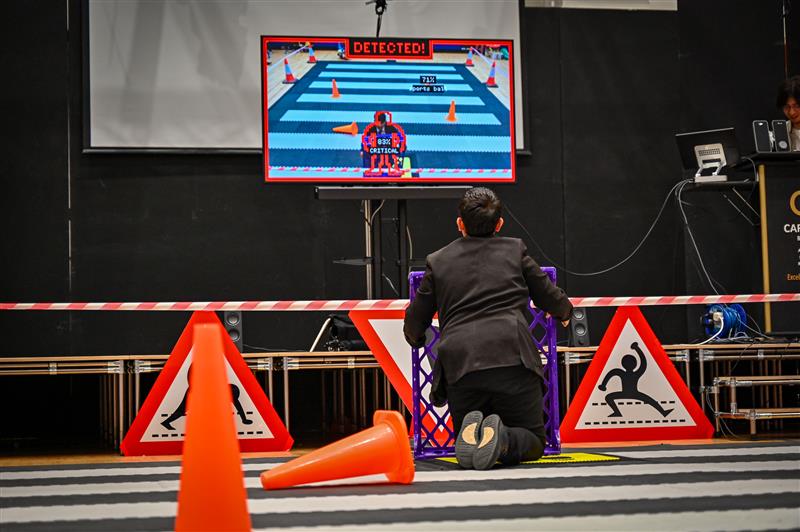Led by artists Dan and Saki, Playfool harnesses digital media to bridge art and technology in a way that resonates with today’s youth, inviting them to explore creativity on their own terms. In this interview, Dan and Saki share their journey into digital arts, the joys of working with Bradford’s students, and their hopes for how this project can inspire the next generation of digital creatives.

What inspired each of you to pursue a career in digital arts?
Dan: We actually came to media arts from very different worlds! I studied mechanical engineering, and Saki started in law. We slowly shifted into arts with Masters degrees in design and an art residency in Japan in 2022 which immersed us in media art. We loved how it had more freedom than traditional design and allowed us to take risks and experiment to express our ideas.
Saki: Exactly. For me, the moment came when I discovered the work of media artists like BCL. I was inspired by how their pieces opened up critical discussions on complex topics without relying on dense texts and so I thought, “That’s what I want to do!” My interest has always been to foster transformative dialogue, and I felt that this field would be a perfect fit for achieving that.
Why did you get involved in the Bradford Digital Creatives project?
Dan: When we were in school, we didn’t have opportunities like this. Sure, we visited museums, but we never had the chance to work directly with professional artists or hear them talk about their journeys. It feels great to bring that experience to students today, making the arts feel more accessible and showing them that creative careers are open to them.

Have there been any surprises for you throughout your work on this project?
Saki: Oh, absolutely! I grew up attending school in Japan, so stepping into English schools has been a completely new experience for me. We’d never been to Bradford before and I was truly impressed by the students’ enthusiasm and ingenuity. Even the shy ones really warmed up and became fully immersed in the workshops – supporting each other and engaging with the game in wonderfully creative ways.

Dan: Working directly with the people who will be most affected by these emerging technologies—self-driving cars and AI—was really interesting. Their attitude to tech was different. It deepened my perspective of how entangled society is with technology already.
If there was just one lesson or takeaway that you hope the students got from their experience with you, what would it be?
Dan: We hope they left with a sense of empowerment, knowing they can use digital tools to tell their own stories, explore ideas, and even shape the world around them. Their generation and the next ones will be most affected by this technology and we want them to know that their relationship with it is flexible – there’s room to explore, adapt, and shape it. They can be active
participants, not just passive users.
Saki: I hope they realised that the world is bigger than they think. There are more than just the classic career paths and art is for everyone. I hope they can find what they thrive for.

Has working with these young people given you any new insights or ideas for your own work?
Saki: Definitely. One of the biggest insights we’ve had is the huge difference in how generations engage with technology, particularly AI. When we asked students if they’d used AI before, most hands went up! They’re already using it on platforms like Snapchat or even for homework. It’s second nature to them. For us, and even the generation just above us, we approach these tools with more caution since we didn’t grow up with smartphones or iPads. Working with these students has made us reconsider what it means to interact with digital technologies, highlighting how each generation’s unique relationship with technology shapes the way they perceive and build their own worlds.